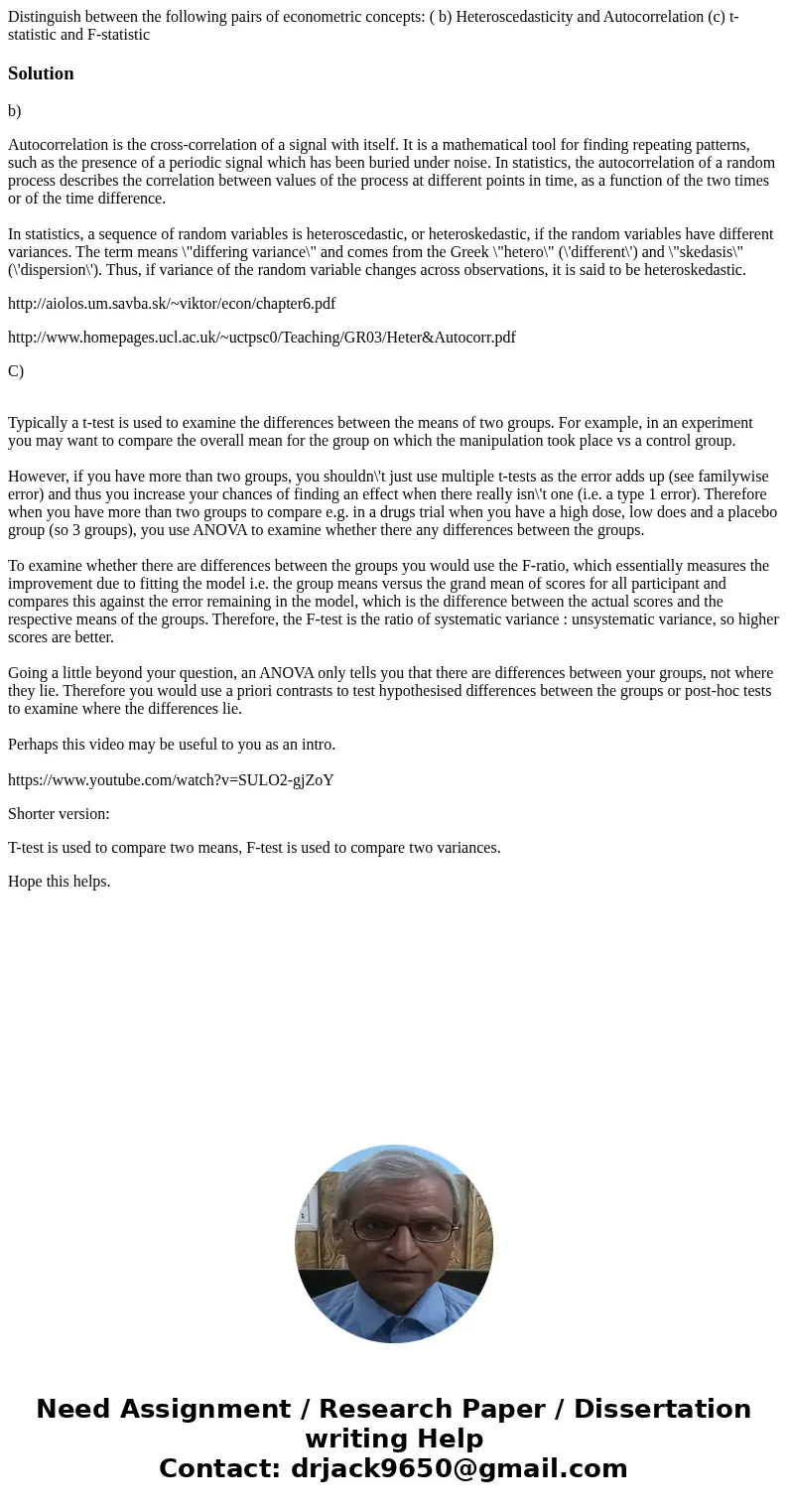Distinguish between the following pairs of econometric conce
Distinguish between the following pairs of econometric concepts: ( b) Heteroscedasticity and Autocorrelation (c) t-statistic and F-statistic
Solution
b)
Autocorrelation is the cross-correlation of a signal with itself. It is a mathematical tool for finding repeating patterns, such as the presence of a periodic signal which has been buried under noise. In statistics, the autocorrelation of a random process describes the correlation between values of the process at different points in time, as a function of the two times or of the time difference.
In statistics, a sequence of random variables is heteroscedastic, or heteroskedastic, if the random variables have different variances. The term means \"differing variance\" and comes from the Greek \"hetero\" (\'different\') and \"skedasis\" (\'dispersion\'). Thus, if variance of the random variable changes across observations, it is said to be heteroskedastic.
http://aiolos.um.savba.sk/~viktor/econ/chapter6.pdf
http://www.homepages.ucl.ac.uk/~uctpsc0/Teaching/GR03/Heter&Autocorr.pdf
C)
Typically a t-test is used to examine the differences between the means of two groups. For example, in an experiment you may want to compare the overall mean for the group on which the manipulation took place vs a control group.
However, if you have more than two groups, you shouldn\'t just use multiple t-tests as the error adds up (see familywise error) and thus you increase your chances of finding an effect when there really isn\'t one (i.e. a type 1 error). Therefore when you have more than two groups to compare e.g. in a drugs trial when you have a high dose, low does and a placebo group (so 3 groups), you use ANOVA to examine whether there any differences between the groups.
To examine whether there are differences between the groups you would use the F-ratio, which essentially measures the improvement due to fitting the model i.e. the group means versus the grand mean of scores for all participant and compares this against the error remaining in the model, which is the difference between the actual scores and the respective means of the groups. Therefore, the F-test is the ratio of systematic variance : unsystematic variance, so higher scores are better.
Going a little beyond your question, an ANOVA only tells you that there are differences between your groups, not where they lie. Therefore you would use a priori contrasts to test hypothesised differences between the groups or post-hoc tests to examine where the differences lie.
Perhaps this video may be useful to you as an intro.
https://www.youtube.com/watch?v=SULO2-gjZoY
Shorter version:
T-test is used to compare two means, F-test is used to compare two variances.
Hope this helps.

 Homework Sourse
Homework Sourse